Welcome to WordPress. This is your first post. Edit or delete it, then start writing!
Author: administrator
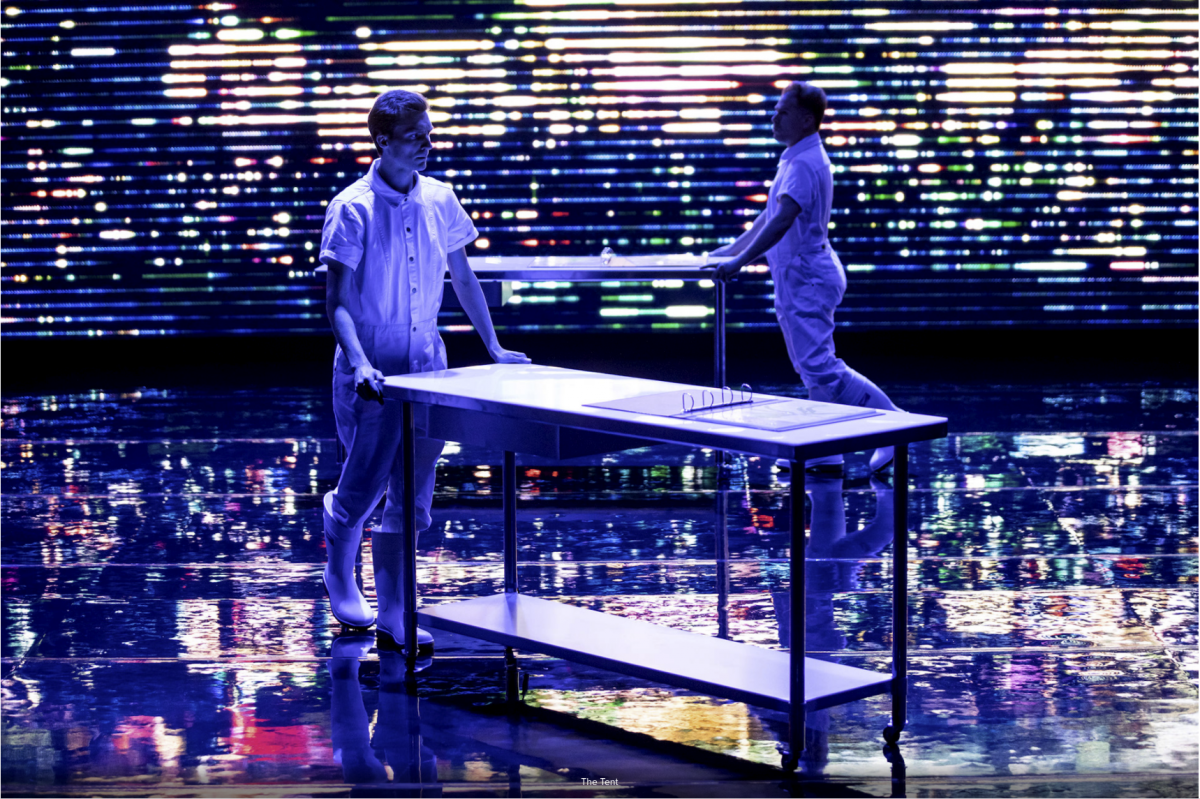
Breaking
new grounds
Adapting literature to music in
Sydney Chamber Opera’s four new works.
By Annarosa Berman
Literature to opera as you haven’t seen it before
Opera has a long tradition of adapting literary works for the stage, but in their works, The Tent, inspired by a Margaret Atwood short story, and Her Dark Marauder, based on a Sylvia Plath poem, composers Josephine Macken and Georgia Scott find ways of adapting literature to music that no great composer of the past had thought of.
Macken, who wrote her own text, never thought of what she was doing as an adaptation in the traditional sense of the word. “I just found a lot of the ideas in Margaret Atwood’s story really poignant, and rich in dramatic potential. So I used it as basis for the ideas I wanted to develop in composition.” Based on the idea of a sentient machine created by a team of researchers, at the core of The Tent is the researchers’ interaction with the machine.
In workshop, Macken says, a dialogue grew “between my experience in developing the work, and the performers developing the work for stage”. Her biggest headache was deciding on the level of separation between the sound made by the machine and the sound created by the singers. “I tried to find a language that carried a sense of ambiguity without leaving the audience with nothing to hold on to.”
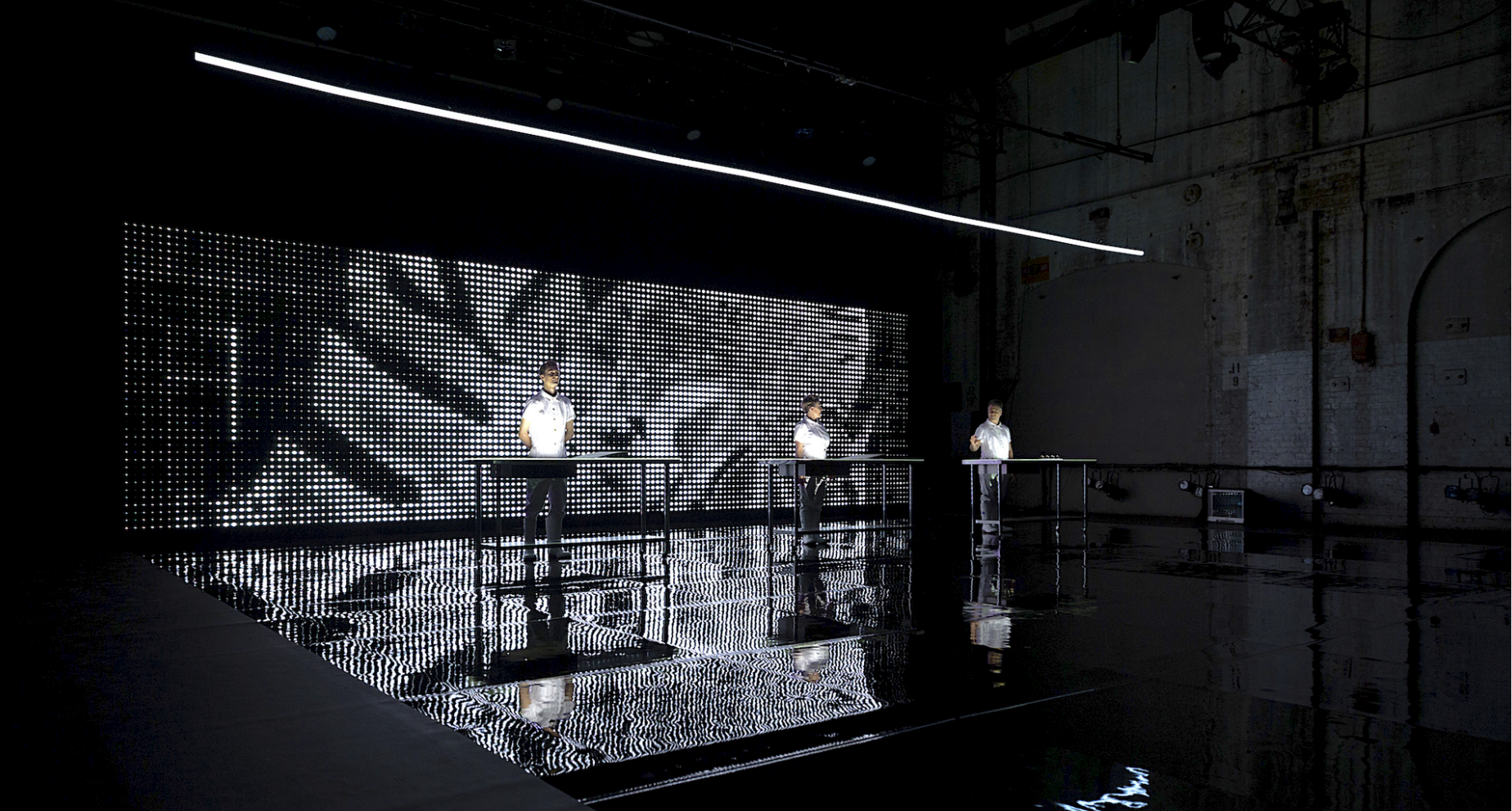
Like Macken, Scott found “the germination of an idea” in a literary text, Sylvia Plath’s poem, The Applicant. In the developmental stage she applied for permission to set the work to music, but when it was denied, librettist Pierce Wilcox wrote her a libretto based on the poem. Director Danielle Maas came up with the title, Her Dark Marauder, a line from another of Plath’s poems.
Scott’s work explores ideas found in The Applicant, particularly gender roles of the late 1960s, and the way those who are physically different and neurologically atypical are treated by society. “Pierce took the Plath and worked it from the inside out,” she says. “There is so much nuance and power in his writing and I am so happy with the result.”
She describes her compositional style as “shifting and changing”. But the Breaking Glass project has given her an opportunity to think about what she wanted to express through her work. She discovered that “the music grows out of what you’re trying to express”.
Macken’s compositional style is different. She describes it as “disrupting a sound or engaging another element that causes the sound to malfunction”, and also, “opera with a different mediating quality depending on what is fed to it or with what it interfaces”.
She never dreamed she’d have the opportunity to compose opera at this stage of her development, but having come this far, she finds the operatic world rich in possibility for a young female composer. In my personal experience, opera-making practices that prioritise unimaginative realisations of canon works are bound by the exclusionary history of the art form, tending to repel the people with whom these stories fail to resonate; the price of admission certainly functions, however unintentionally, as an additional exclusionary force. You see a lot of extraordinary projects coming out of questioning the predominant narratives proposed by the art form, but for reasons of age and experience, I didn’t expect that I would be a part of it.”
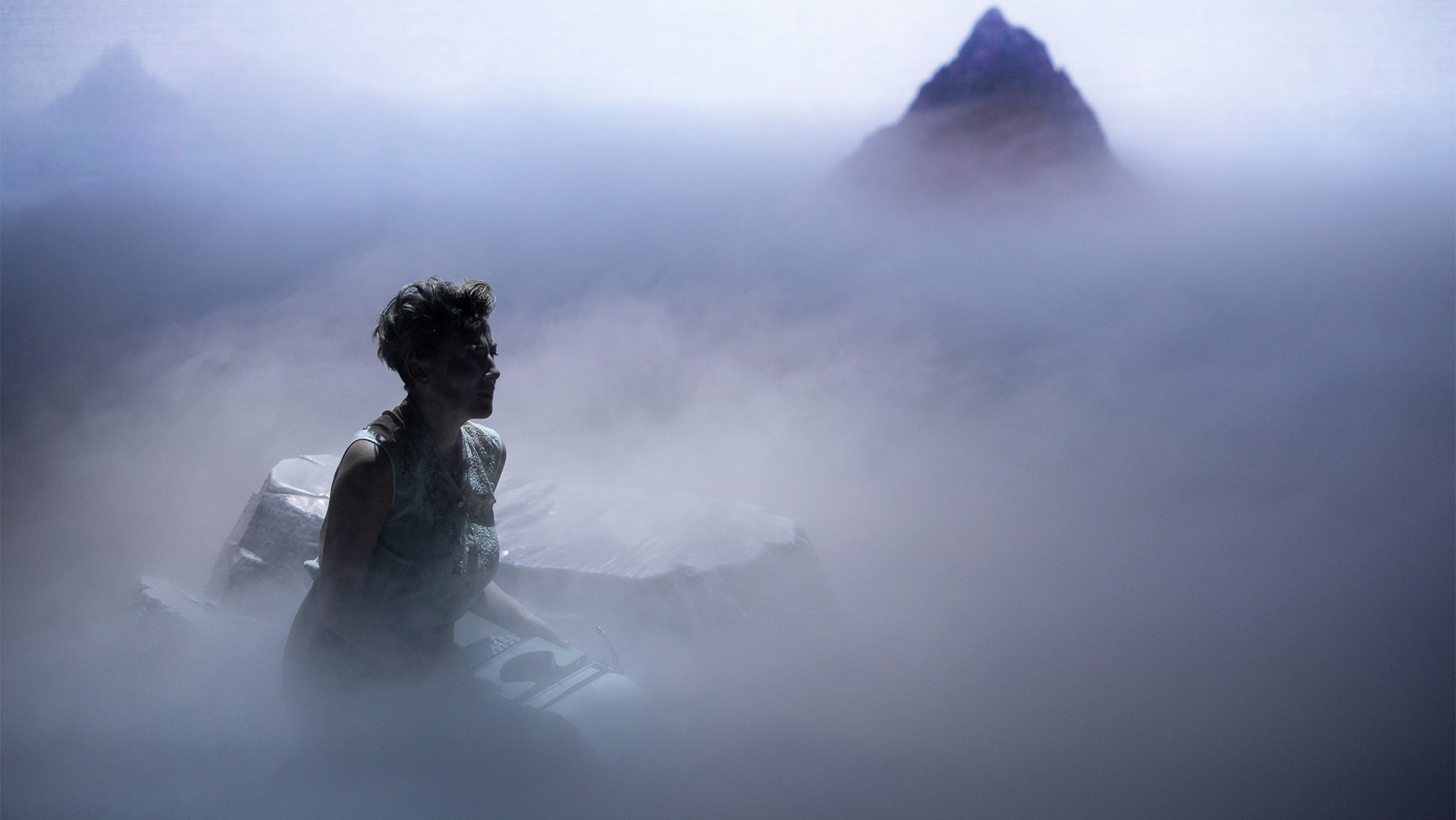
Scott too, never imagined that composing opera would be a possibility for her. “I went to see operas, and enjoyed watching them, but composing one wasn’t something I thought I’d ever be able to do. The canon is full of the glorification of violence against women and minority groups. And you wonder: where is the space for my voice in this? SCO is bucking the trend in so many ways, and giving us that voice is one of them.”
The company is welcoming of the stories of people of different backgrounds, she says, and hopefully Breaking Glass will be an opportunity for audiences too, to explore the stories of people who traditionally would not have had their stories told through opera.
The SCO collaboration opened new worlds for both composers. “Working with professional musicians transforms the score, as does lighting and costuming, timing and space, and dramaturgy,” Macken says. “All these elements have had a surprising impact on the musical work as it developed.”
Having a workshop two years before opening night proved especially helpful. Scott explains that what she thought her first work was, on paper, was very different from the pacing on stage, and “the way things worked in space”. Moreover, to be in a room with the singers enabled her to go back and compose with those voices in mind. And there was meeting with the director, the librettist, the conductor, while developing the work. “Collaborating with other artists changed my perspective. My work has developed into something very different from what it first was, and it’s made me so happy.”
The SCO collaboration opened new worlds for both composers. “Working with professional musicians transforms the score, as does lighting and costuming, timing and space, and dramaturgy,” Macken says. “All these elements have had a surprising impact on the musical work as it developed.”
Both composers started writing music early. Macken wrote her first compositions in late high school, when she gained access to music software, and school assignments opened up “this music world I hadn’t known before”. A flautist by training, access into a different way of music making was exciting, “and it spiralled from there”.
Scott was fortunate enough to have had a piano teacher who encouraged her to compose pieces from a very young age. “So from about seven I said I wanted to be a composer.” Later at high school she played the trombone “badly”, but playing in an ensemble, and singing in a choir, enabled her to learn how harmony worked. From about eleven she was “really serious about being a composer”.
As for the future: Macken would love to develop theatre works with colleagues. “It’s a really extraordinary way of making a work; there’s nothing like it.” In the immediate future though, “I need a break!”
Scott, who describes the SCO collaboration as a watershed experience, would just love to be able to continue composing music. “If it’s for the stage, wow, that would be amazing.”
Keep in touch
General Inquiries
- contact@sydneychamberopera.com
-
SCO, Carriageworks
PO Box 3035 Redfern, NSW 2016
Postal Address -
SCO, Carriageworks
245 Wilson St Eveleigh, NSW 2015
Resident Address - (02) 8571 9106
Support Us
Connect with us
We acknowledge the Gadigal people of the Eora Nation as the traditional custodians of the land on which we work and perform. We honour their elders both past and present, and extend that respect to all Aboriginal and Torres Strait Islander peoples.
- Tags breakingglass
Casting Off the Burden of the Canon
- Post author By administrator
- Post date March 12, 2020
- No Comments on Casting Off the Burden of the Canon
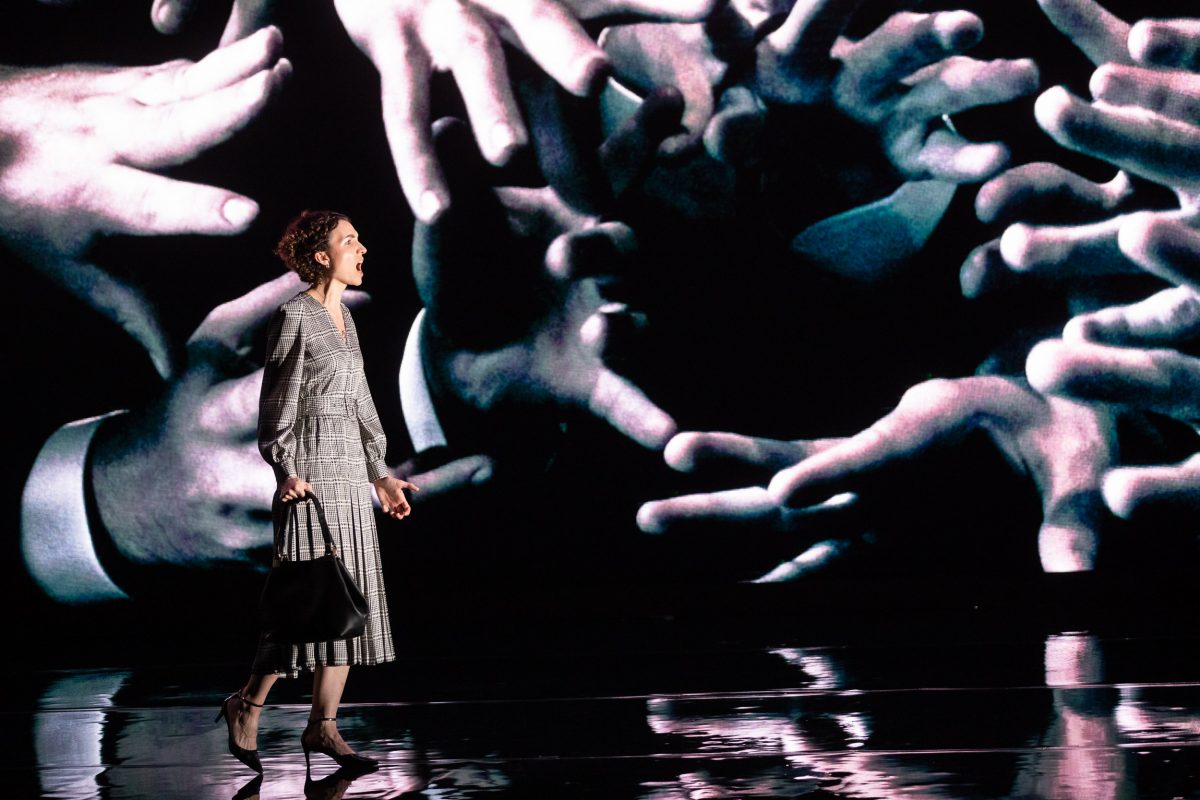
CASTING OFF
THE BURDEN OF
THE CANON
A discussion of women composers in the operatic canon.
By Annarosa Berman
Every opera lover has a favourite soprano. If very few have a favourite woman composer, the reason is obvious. In Breaking Glass, a quadruple bill of four one-act operas composed by four women composers, Sydney Chamber Opera (SCO) in partnership with the Sydney Conservatorium of Music’s Composing Women program, addresses the absence of women composers in the operatic canon.
Fittingly, composers Peggy Polias and Bree van Reyk have chosen feminist themes for their works. Neither musician had been thinking of writing an opera until the opportunity of an SCO collaboration came up. Polias imagined that it would come later in her career, if at all, and van Reyk didn’t think she’d ever write an opera.“The expense of grand opera is intimidating to begin with,” she says.“And opera is so problematic for women. It almost always involves a woman dying or being raped. Do we really want to glorify this?”
Moreover, Polias says, opera composers of the past all being male, “the burden is the canon and companies wanting to stage and restage it because that’s what their audience wants to hear.” She doesn’t see this as an insurmountable problem though. “It’s about finding the audience who wants to hear what you have to offer. You wouldn’t force punk on someone who likes rap, would you?”
The idea for van Reyk’s opera, The Invisible Bird, came from thoughts about women’s invisible contribution to society. “We are not lauded as the great heroes or masters or saviours of the world,” she says. She saw a parallel between women’s contribution to society and birds, whose beautiful sound enrich our lives even though we often don’t see them.
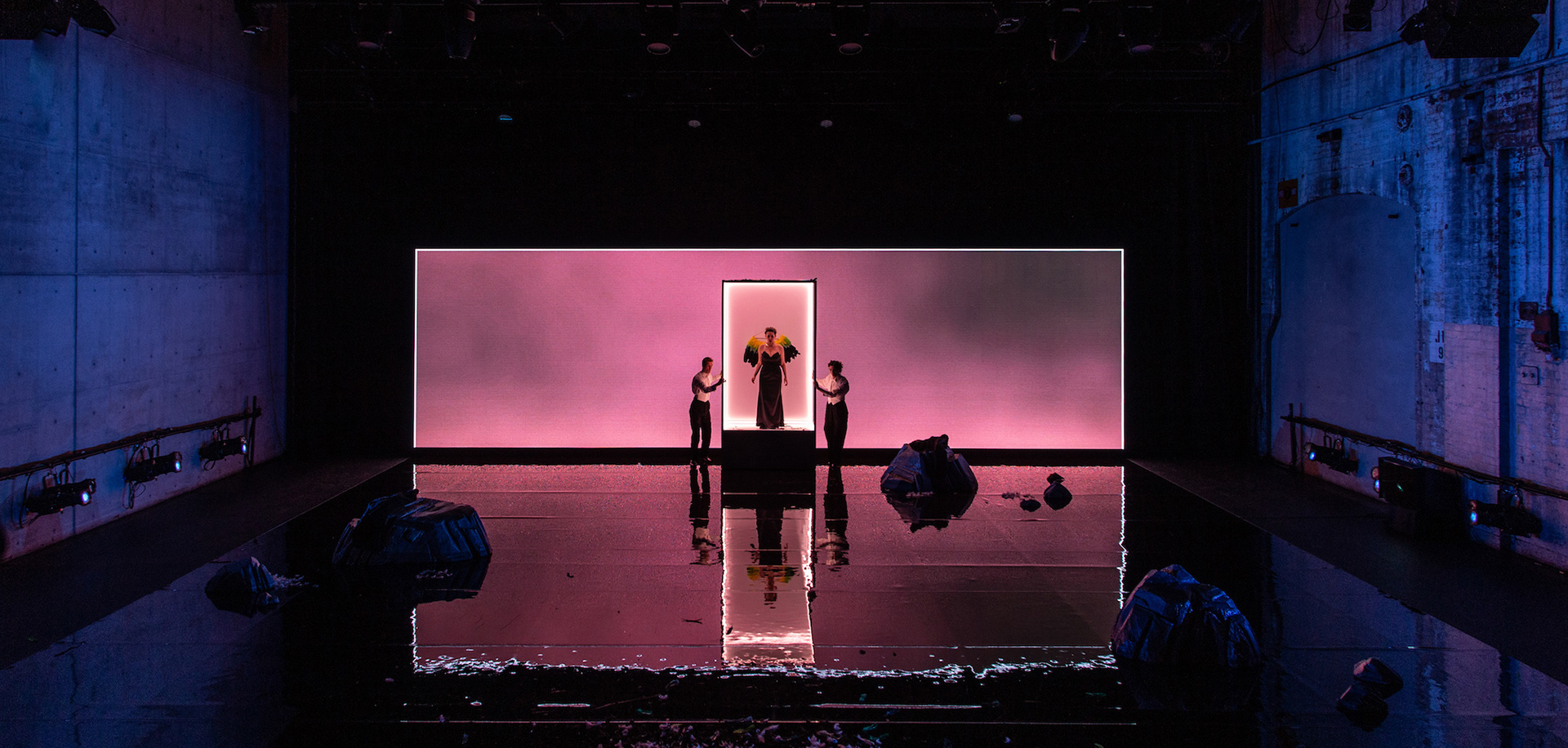
The night parrot, the subject of her opera, was long thought to be extinct, yet found again in the early 2000s. “Someone found a dead night parrot by the roadside, then ornithologists found a nest with three eggs nearby. But the next day the eggs had gone – eaten by snakes.” A ground-dwelling bird, the night parrot’s survival was always unlikely, but the arrival of settlers, who brought introduced predators with them, and who hunted the bird as a prized trophy, made matters infinitely worse.
“The fact that everyone thought it had disappeared and yet it was still there, plays into the idea of invisibility – if you’re not looking in the right places, you won’t see anything.” That goes for women too. “It’s not that they haven’t been there; they just haven’t been included.”
The Invisible Bird has no narrative arc, and van Reyk wrote the libretto – the names of birds currently extinct or endangered – herself.
Polias, who chose a feminist angle for her opera, Commute, because the commission came at the height of the #MeToo public discourse of 2017/18, likewise wrote her own libretto.
“I was hearing my friends’ #MeToo accounts, and I’d had my own experiences in that regard.” As a composer, it was logical to explore the theme through music rather than through social media. As for the focus on a commute: “Most women have had scary experiences walking home from work. Commute asks the question: where does this walk home lead?” The work is about navigating public spaces safely.
Yet Polias found the idea of a narrative along the lines of “woman walks home and all these things happen to her and you’re going to see it on stage” uninspiring. “Many Hollywood films do that; I was not interested in perpetuating the same tropes.” Thus, Commute is an interior journey.
As for the libretto: Polias, who has Greek heritage and reads a little ancient Greek, found inspiration in the Odyssey’s episodic structure, where Odysseus vanquishes or outsmarts some creature in each episode. The text is mostly in English, with some Modern Greek, and a short quote from the Odyssey in Ancient Greek.
Both composers found the SCO collaboration inspiring. Polias says: “Writing an opera for the first time, the temptation was to throw everything but the kitchen sink at it. But you learn that you don’t have to express everything in the music; that some meaning will happen in the lighting, the costumes, the acting. Getting input from different perspectives has been amazing. ”
“The expense of grand opera is intimidating to begin with,” she [ composer Peggy Polias] says. “And opera is so problematic for women. It almost always involves a woman dying or being raped. Do we really want to glorify this?”
Van Reyk, who has been working as a percussionist and drummist since graduating from uni twenty years ago, began to compose a decade ago. “I have a punk rock/garage rock upbringing and played drums in lots of bands,” she says. She later played as a casual in the opera and ballet orchestra, but could never see the singers. “And what you hear down in the pit is crazy.”
Polias grew up learning piano and trumpet, “mucked around” on the guitar, all while acquiring a strong grounding in theory. From around the age of ten she started sketching composition ideas “for when I had more skill”. In high school, shy as a performer, she wrote little pieces for other people. She did her masters in composition at Sydney University under Anne Boyd and applied for the Composing Women program because she wanted to “push her craft” a little more.
She’d love to revisit the opera format again some day. “I like the compressed thirty-minute form, and I love the quad bill; it’s a really great format for presenting new work. But maybe one day I’ll write a massive grand opera, who knows?”
Van Reyk is looking forward “to just keep writing music”. The next couple of things she’s working on are less political though: “To be thinking of feminism all the time can be quite exhausting.”
Composing Women offers aspiring composers either a masters of a doctorate, which includes collaborations with SCO, the SSO, and a soloist. Founded by Matthew Hindson, the initiative addresses the fact that among first-year uni students worldwide, equal numbers of women and men pursue composition, yet in the professional world, the ratio between women and men drops to 1:4.
Keep in touch
General Inquiries
- contact@sydneychamberopera.com
-
SCO, Carriageworks
PO Box 3035 Redfern, NSW 2016
Postal Address -
SCO, Carriageworks
245 Wilson St Eveleigh, NSW 2015
Resident Address - (02) 8571 9106
Support Us
Connect with us
We acknowledge the Gadigal people of the Eora Nation as the traditional custodians of the land on which we work and perform. We honour their elders both past and present, and extend that respect to all Aboriginal and Torres Strait Islander peoples.
- Tags breakingglass
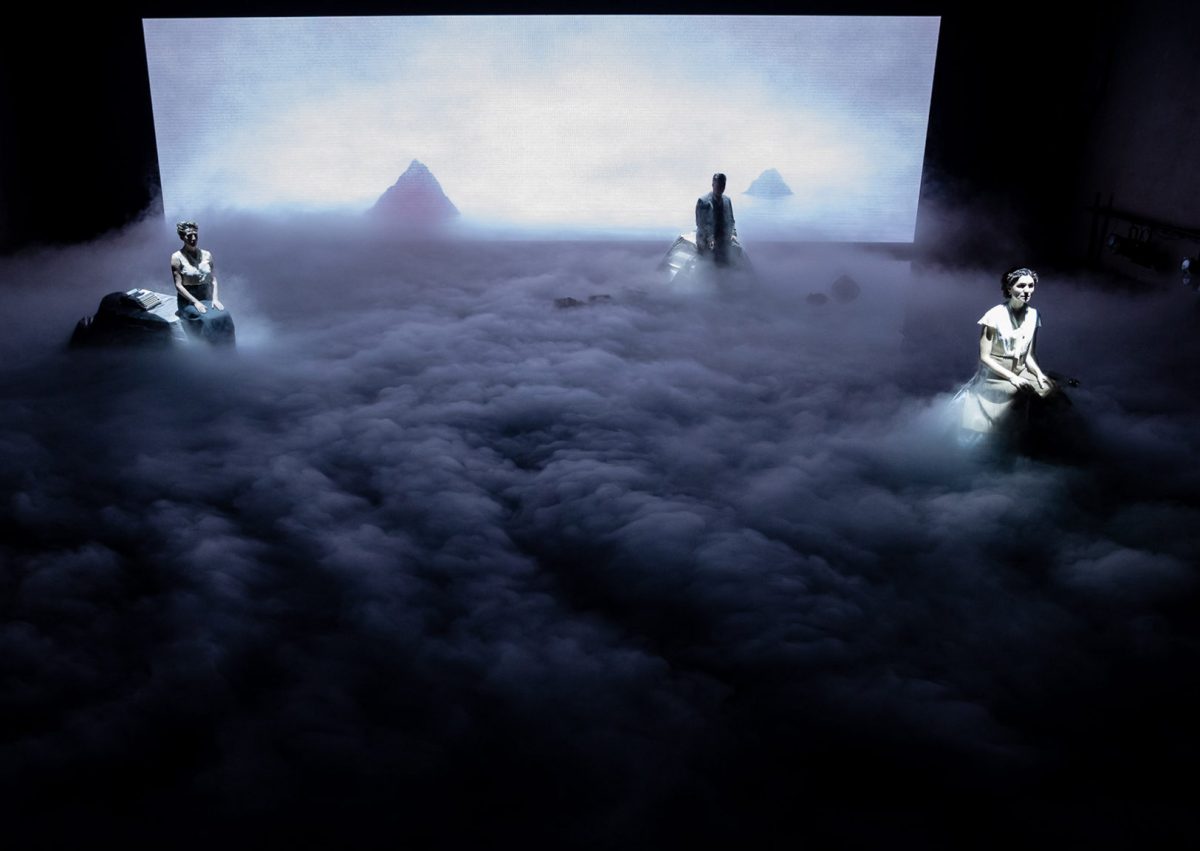
TWO DIRECTORS AND A QUADRUPLE BILL
An interview with directors
Danielle Maas and Clemence Williams
By Annarosa Berman
It’s not often that two women directors get to direct four operas, all composed by women, in one over-arching bill. Yet in Sydney Chamber Opera’s quadruple bill, Breaking Glass, the all-female angle is the point: the four composers are products of Sydney University’s Composing Women program, established in an attempt at addressing the imbalance between male and female composers in the music industry.
As Danielle Maas, who directs two of the operas, Georgia Scott’s Her Dark Marauder and Josephine Macken’s The Tent, puts it: “There are extraordinary works by contemporary male composers, and yet making the conscious choice to give more space to female composers is really important – in the same way that it’s really important to give more space to creators of colour, and creators of different classes. It’s about making space for a multiplicity of perspectives when historically, male composers have had the pie almost all to themselves.”
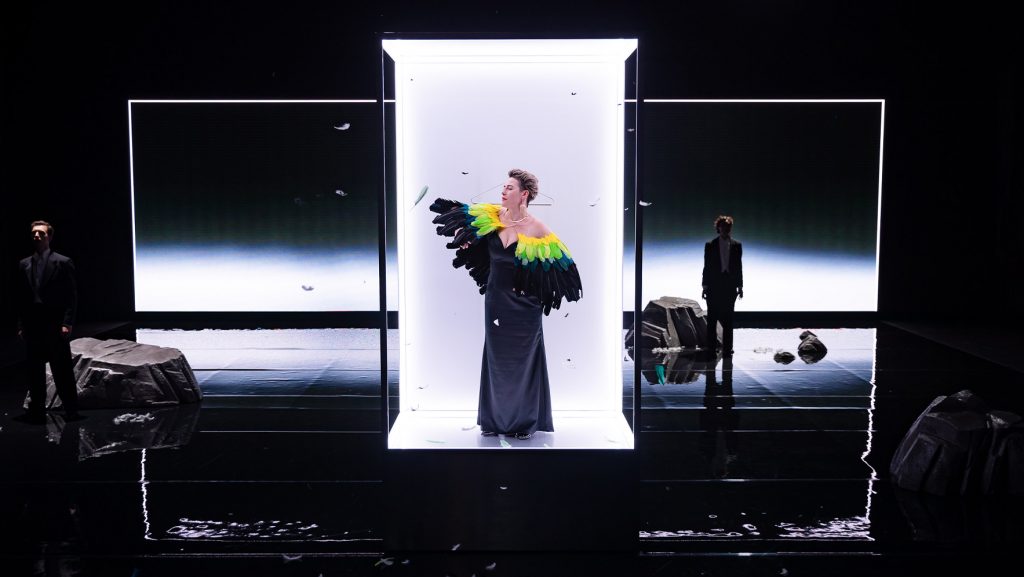
Clemence Williams, who directs Peggy Polias’ Commute and Bree van Reyk’s The Invisible Bird, explains the logistics of two directors steering four operas that are part of a bigger whole: “We’re the captains of the ship for each individual opera, but we have an exceptional creative team who work across all four.” That in itself draws the four operas together. More importantly: “They’re young female Australian composers. They’re going to have a synergy that connects them to the whole.” While there’s room to champion the individual qualities of each of the operas, they’re always going to be seen as a group.
Williams describes Peggy Polias’ Commute as “at its simplest, about a woman’s journey home”. Inherently that journey involves fear – “Margaret Atwood said men were afraid of being laughed at and women, of being killed”. Polias’ sonic landscape vividly describes the fear women experience in the simple act of trying to get home. She’s layered her story with allusions to Greek mythology, so monsters appear along the way. Conceptualising Commute, says Williams, has been “a joy” despite the challenge of representing an internal journey on stage. “It took imagination,” she says, with a laugh. “If this were a play I would have been tearing my hair out! But the exciting thing about opera is that it allows us to exist on different plains simultaneously; we can meditate our way through, rather than go on a little journey with a character.”
Bree van Reyk’s The Invisible Bird presented a different but equally enjoyable challenge. “Bree has used the sad story of the night parrot that was thought to be extinct, only to be found again, as an allegory for women’s voices across the history of Western classical music,” says Williams. Exploring the canon from the inside out has been a deeply rewarding experience.
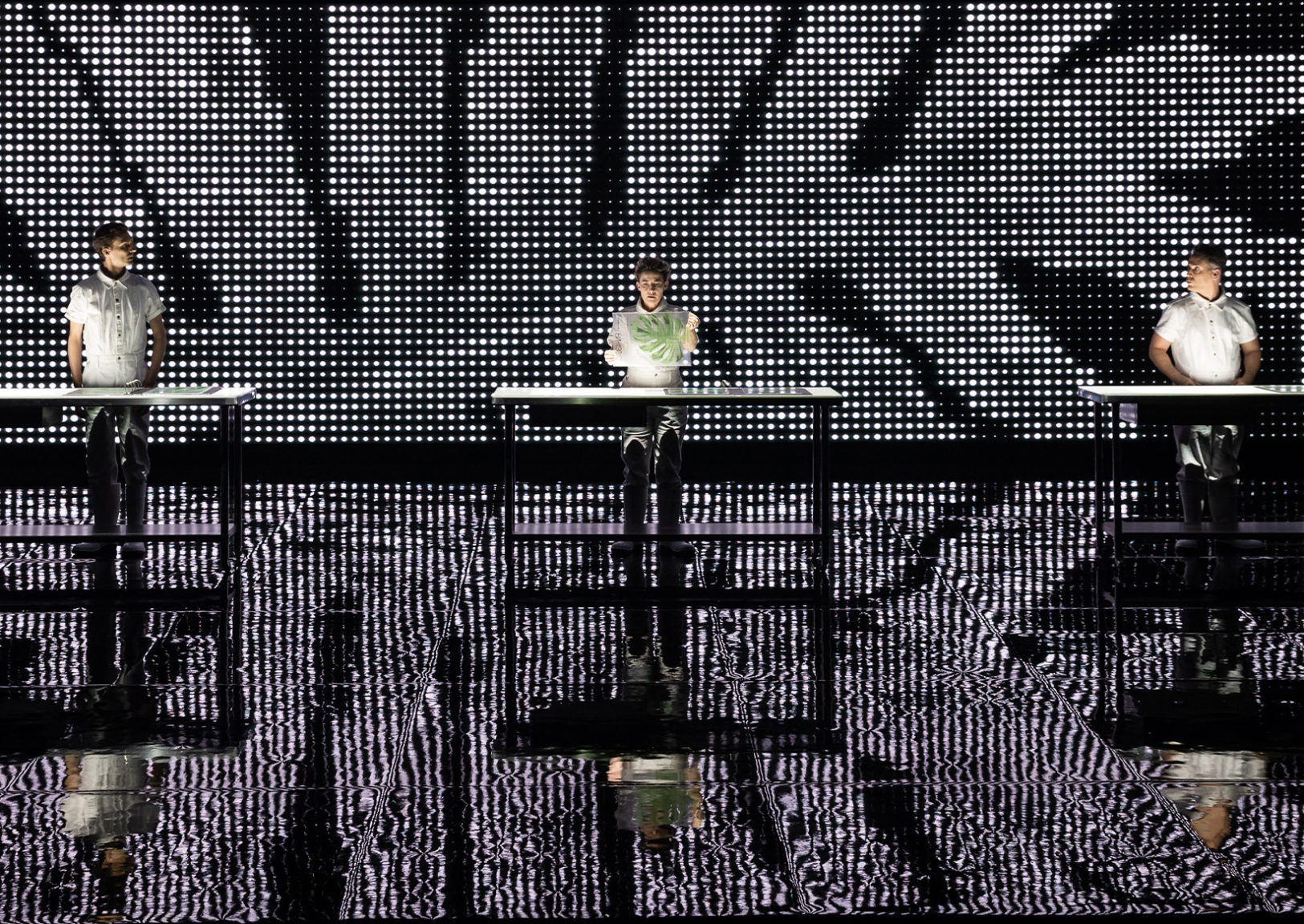
For Danielle Maas, whose wish list for directing includes new work, women composers and electronic music, directing Josephine Macken’s The Tent and Georgia Scott’s Her Dark Marauder, is a dream come true. The Tent is a meditation on a Margaret Atwood short story, “where the idea of creation becomes an act of self preservation in the face of ecological trauma and disaster”, Maas says. Since the work is almost completely without text, Maas imagined it as a world where language is breaking down. There’s very little emotion expressed, and there’s ambiguity as to the meaning of what people are saying. “The style of the piece has resulted in symbolism, Maas says, “which is not particularly trendy in theatre at the moment, but it felt right to create a world with several layers of ambiguity.”
In Scott’s Her Dark Marauder, once again the audience is let in on a meditative experience, rather than taken on a linear journey. Maas says: “The opera is about the main character’s relationship to her depression, and what we asked ourselves was, how do you give an audience a sensorial experience of depression? Because if we can experience what depression feels like, maybe that’s a way to empathy.”
Finding a directorial angle is what directors do best, but when directing a new opera, negotiating a complicated score for which no piano reduction or recording exists, can be a headache. Williams, a trained classical singer and percussionist, reads music fluently. “If anything I need to be reminded sometimes that there are words,” she says, with a laugh, adding that it’s “a joy and absolute thrill” to be hearing a piece of music for the very first time; to be “the first set of eyes and hands to mould it into something tangible”. Yes, Breaking Glass is full of complex music, but having written music for the theatre herself, and having recently completed a course in electronic music, Williams felt able to “unlock the components of a piece of electronic music”.
“There are extraordinary works by contemporary male composers, and yet making the conscious choice to give more space to female composers is really important – in the same way that it’s really important to give more space to creators of colour, and creators of different classes. It’s about making space for a multiplicity of perspectives when historically, male composers have had the pie almost all to themselves.”
Maas, on the other hand, when asked about difficult contemporary scores, throws up her hands up and laughs: “I’m the ultimate layman…lay woman…of opera! It’s amazing that I even work in opera because I’m musically illiterate! It’s terrifying!” But all is never lost when Breaking Glass conductor Jack Symonds is near, she adds.
“I sat down with Jack and he talked through the score and what it was doing. He’s exceptionally good at explaining what things might feel like or sound like. He’ll explain a moment to you, and he’ll go, it sounds like a decaying garden. And you’ll go, Great!” The score she was given included detailed notes by Symonds and the composers. “So you work out how you’re going to translate those notes into a dramatic experience. And once you’re in the rehearsal room, you pay attention to what every musician is doing, because their bodies respond to the music.”
Thanks at least partly to the delightful challenge of Breaking Glass, in future both directors would love to continue working in opera. As Maas puts it: “This is exactly the kind of work that I would love to make for the rest of my life.” Williams can only agree: “Making new opera with a team of accomplished professionals…it’s just terrific.”
Keep in touch
General Inquiries
- contact@sydneychamberopera.com
-
SCO, Carriageworks
PO Box 3035 Redfern, NSW 2016
Postal Address -
SCO, Carriageworks
245 Wilson St Eveleigh, NSW 2015
Resident Address - (02) 8571 9106
Support Us
Connect with us
We acknowledge the Gadigal people of the Eora Nation as the traditional custodians of the land on which we work and perform. We honour their elders both past and present, and extend that respect to all Aboriginal and Torres Strait Islander peoples.
- Tags breakingglass
Breaking Glass
- Post author By administrator
- Post date March 1, 2020
- 2 Comments on Breaking Glass
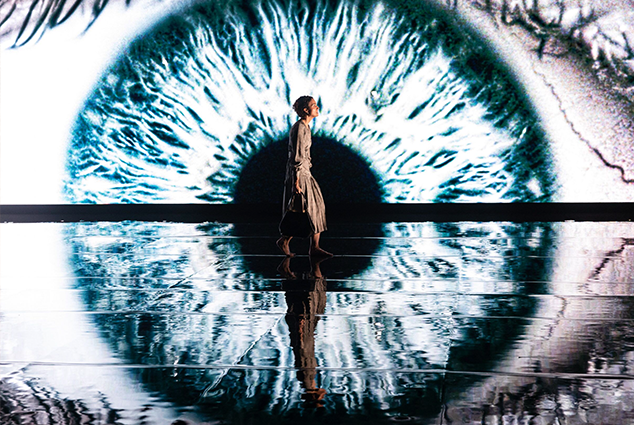
Breaking Glass
World Premiere Co-presented with Carriageworks
Quadruple bill of
Her Dark Marauder by Georgia Scott
Commute by Peggy Polias
The Tent by Josephine Macken
The Invisible Bird by Bree van Reyk
Read the Directors’ & Composers’ notes here
Four women weave new worlds from music.
Women have always starred in opera, but with the contours of their lives scored by men. In Breaking Glass, the brilliant composers Peggy Polias, Josephine Macken, Georgia Scott and Bree van Reyk, seize the stage and share the stories they have always wanted to tell.
In partnership with the Sydney Conservatorium of Music’s Composing Women Program, SCO presents a quadruple bill of their new one-act operas.
Commute transforms the saga of Odysseus into the prickling unease of a modern woman’s walk home at night. The Tent creates a landscape of pulsating terror from Margaret Atwood’s knife-sharp prose and the tiniest fragments of wounded sound. In Her Dark Marauder, Sylvia Plath’s poetry inspires a woman’s battle for her identity in a spirit-crushing world. The Invisible Bird takes the true story of a rare breed of Australian parrot struggling for survival and renders it a dazzling journey to emancipation.
These world premieres are directed by Clemence Williams and Artistic Associate Danielle Maas, two women determined to smash open an expanse of possibility for operatic storytelling.
Breaking Glass is a new future for opera.
Photography by Daniel Boud
Conductor
Jack Symonds
Directors
Danielle Maas
Clemence Williams
Set & Costume Design
Charles Davis
Lighting Design
Alexander Berlage
AV Design
David Bergman
Sound Design
Ben Carey
Writer & Dramaturg
Pierce Wilcox
Assistant Conductor
Huw Belling
Production Manager
Jason Thelwell
Stage Management
Ellen Castles
Ayah Tayeh
Singers
Jessica O’Donoghue
Jane Sheldon
Mitchell Riley
Simon Lobelson
Instruments
James Wannan
Ben Ward
Lamorna Nightingale
Jason Noble
Alison Pratt
‘The Tent’ is proudly supported by & dedicated to
Penelope Seidler AM
‘Commute’ is proudly supported by & dedicated to
Prof Di Yerbury AO
Producers
Anonymous (1)
John Barrer
Neil Burns
Martin Dickson AM & Susie Dickson
The Johnson Family Foundation through the Myer Foundation
The Russel Mills Foundation
The Sydney Community Foundation’s Women Composers Fund and its associated donors
Associate Producers
Jim Alexander & Kathir Ponnusamy
Andrew Andersons AO
Gil Appleton
John Kaldor
James Williams
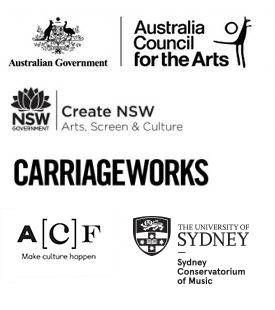
stream now
Gallery
VENUE
Carriageworks
Bay 20, 245 Wilson St, Eveleigh
duration
1 hour 20 minutes
Press Reviews
Discover More
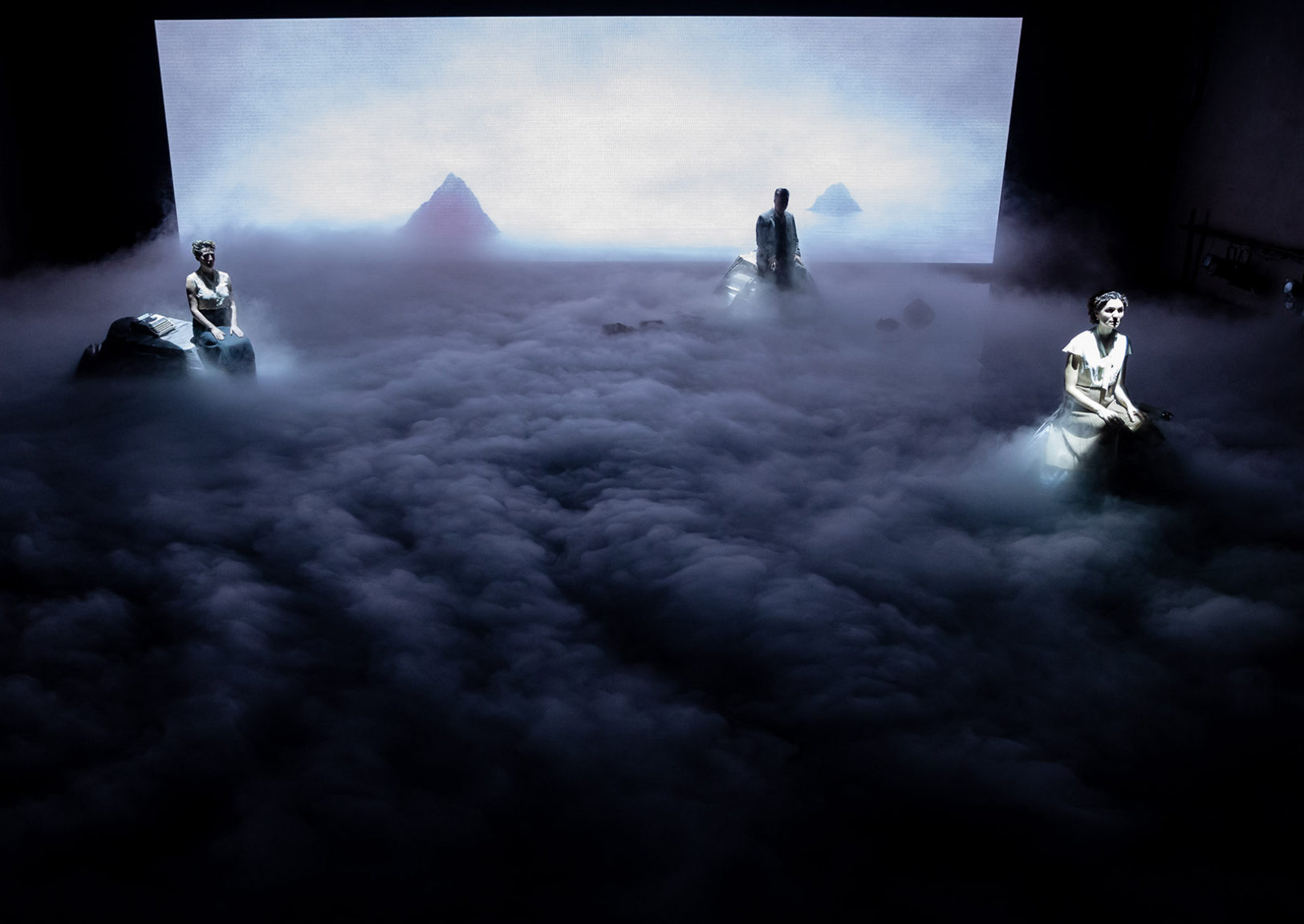
Two Directors and a Quadruple Bill
An interview with directors Danielle Maas and Clemence Williams
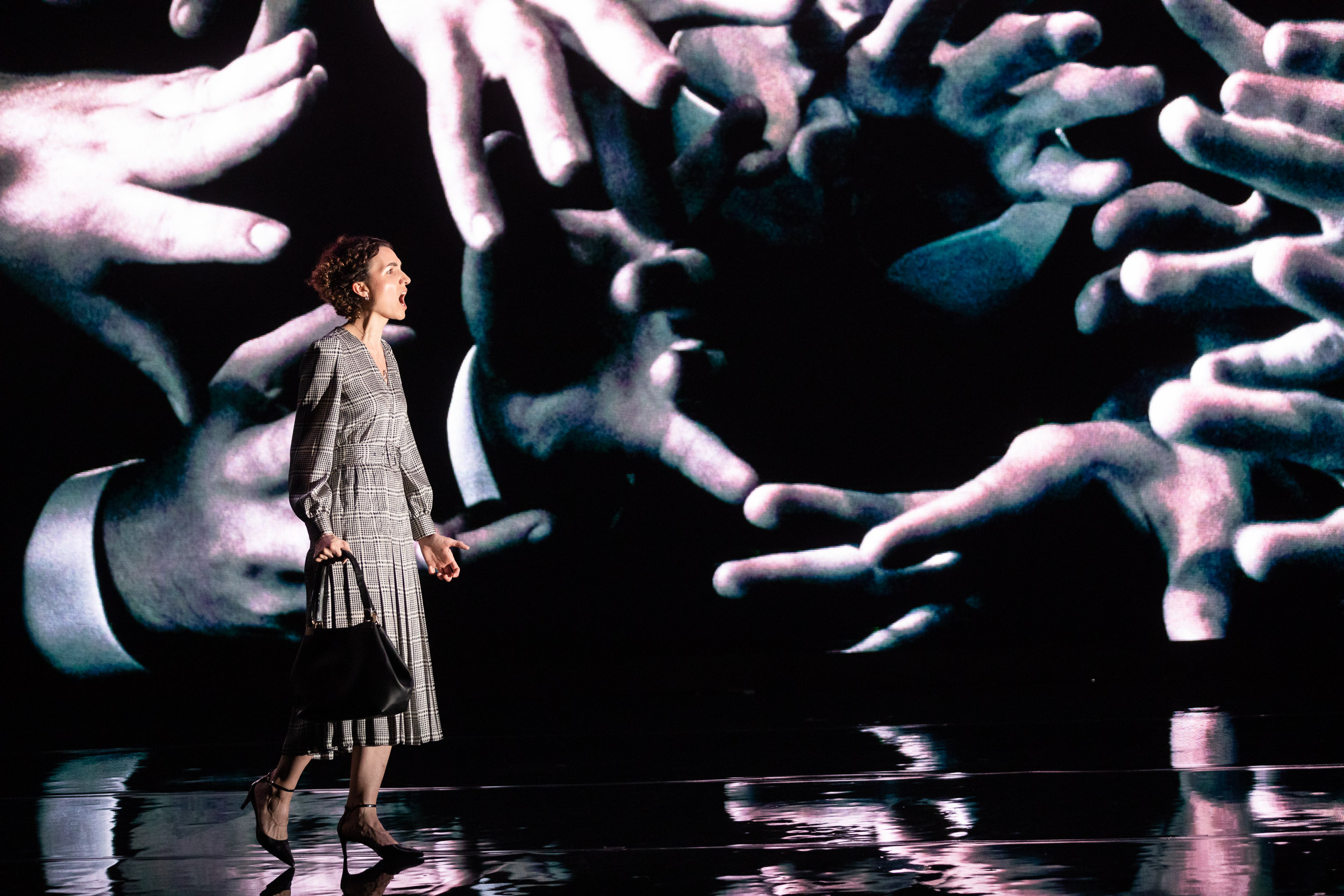
Casting Off the Burden of the Canon
A discussion on the absence of women composers in the operatic canon.
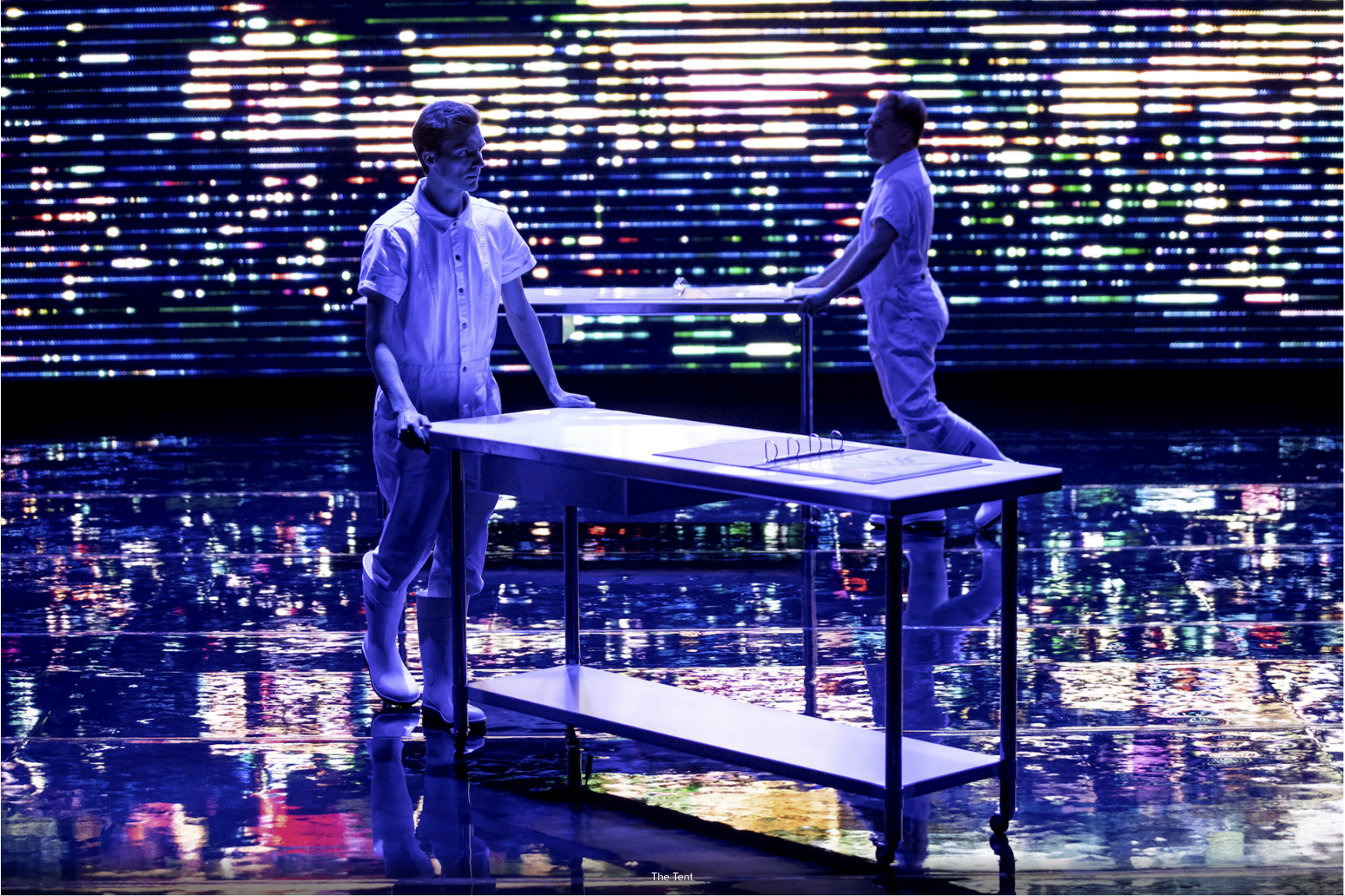
Breaking New Ground
Adapting literature to music in Sydney Chamber Opera’s four new works.
Keep in touch
General Inquiries
- contact@sydneychamberopera.com
-
SCO, Carriageworks
PO Box 3035 Redfern, NSW 2016
Postal Address -
SCO, Carriageworks
245 Wilson St Eveleigh, NSW 2015
Resident Address - (02) 8571 9106
Support Us
Connect with us
We acknowledge the Gadigal people of the Eora Nation as the traditional custodians of the land on which we work and perform. We honour their elders both past and present, and extend that respect to all Aboriginal and Torres Strait Islander peoples.
Drowning in a Glass Church
- Post author By administrator
- Post date August 11, 2019
- No Comments on Drowning in a Glass Church
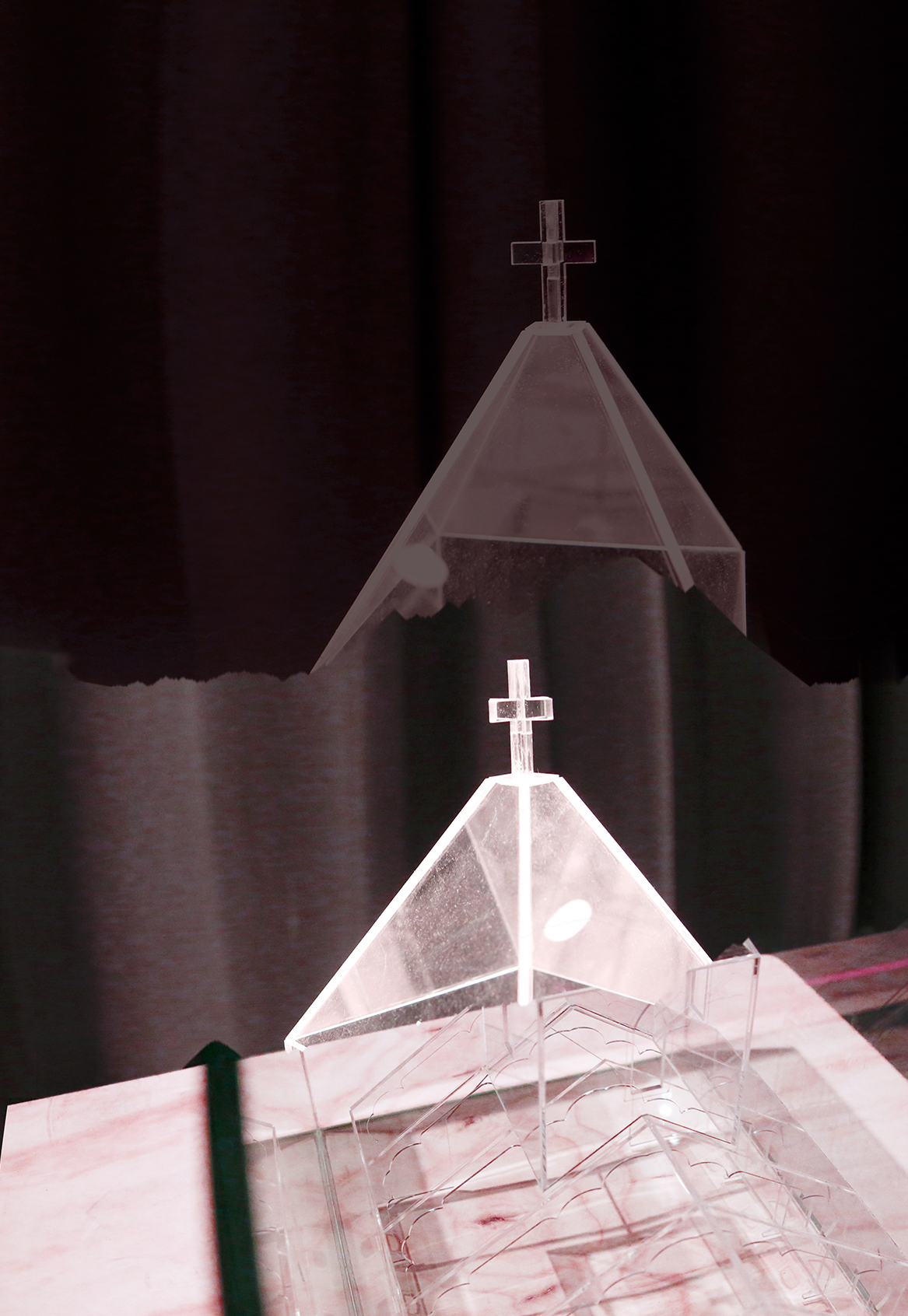
DROWNING IN A
GLASS CHURCH
The challenge of staging Oscar and Lucinda
By Annarosa Berman
In bringing to life Elliott Gyger and Pierce Wilcox’s Oscar and Lucinda, which opens at Carriageworks on 27 July, director Patrick Nolan and designer Anna Tregloan’s biggest challenge was presenting the central image from Peter Carey’s novel – a man drowning in a glass cathedral floating down a river – on stage. Nolan says, with a laugh: “Having water in an environment where electricity is everywhere, is hair-raising.” As for glass, “If it breaks, you’re in a lot of trouble.” Glass and water are the two things you never put on stage. “Perhaps that captures the risk of putting on new opera!” Nolan says, laughing again.
Director and designer faced another headache: staging a musically complex new opera for which there was no recording. As Nolan says: “Normally you’d familiarise yourself with the score by listening to it, as this enables you to see how it will come to life.” Working on a production without having heard the music or studied the score is, to say the least, difficult. Tregloan adds: “The Oscar and Lucinda score is out there of course, but I’m not able to study such difficult music from the score only!”
After many conversations with lighting designer Damien Cooper, Nolan and Tregloan found the solution to their first problem: light. “Through reflection, light can conjure up both water and glass,” Nolan says. As for the music: they relied on Elliott Gyger and conductor Jack Symonds to fill in the gaps. “Elliott and Jack have been describing the music to us in as much detail as possible,” Nolan says. “Staging opera is always an act of the imagination, but with a new work, you really have to enter into it.”

In these circumstances, the libretto played an even more crucial role in informing the shape of the production. But for the creative team the process started even earlier, with research into as well as around the topic. Both re-read the novel and Tregloan watched the film, knowing that even though it didn’t directly relate to the project, audiences may have seen it. “It’s just good to know what sort of knowledge is out there about the story,” she says.
She and Nolan next explored the themes of Carey’s novel. “What Lucinda sees as chance, Oscar sees as providence,” Nolan says. “For both of them, what appears to be random over time forms a pattern. This is the central idea of the novel.”
When they read the libretto in detail, it opened up more ideas. “The text is particularly beautiful and evocative, even without music,” Tregloan says. “Like the novel, it’s very sharp and witty, and very beautiful and evocative metaphorically and visually. Reading it definitely affected the texture of the stage production.”
After the libretto, it was, in Nolan’s words, “very much a series of conversations; wandering down different paths until you eventually identify the key things that you want to communicate through the design and direction.” Director and designer came to the opera with a sense of its world gleaned from reading the book and the libretto. “The novel is a rambling, Dickensian, many-layered narrative, and what Elliott and Pierce have done, is to have reduced it down to its essentials,” Nolan says. “If the novel is a big, brothy, beefy stock, the opera is a fine consommé.”
A few themes landed early. Rather than working with naturalistic images, Tregloan says she tends to come up with metaphorical elements that have a logic of their own. “Very early on, we thought of the idea of randomness becoming order,” she explains. “And I wanted to include the idea of the Australian bush without having a naturalist scene. It took quite a while to work out how to present these ideas visually.”
Some ideas did not withstand the test of time. Performers, for example, were going to “move here and move that and then all these bottles would come on.” Tregloan says: “It reached a stage where we realised it would be physically too much for the performers to do.” She laughs. “All the elements are still there, but they’ve been pared down.”
“Staging opera is always an act of the imagination, but with a new work, you really have to enter into it.”
With imagery established, the next step was working out what the production’s performance language was going to be. “The novel, the film and the libretto are witty and funny, and in keeping with that we’ve created a playful space through containing and framing the story,” Tregloan says. “Understanding it as active theatre-making is important: rather than a factory, there’s a model of a factory. Similarly, performers start with everyday contemporary clothing, then, as part of the playfulness of creating theatre on the spot, they add costume elements on top of that, all on stage. We’re very overt about the fact that we’re story-telling.”
When we speak for this article, rehearsals have not yet begun. When they do, things may well change again. Says Nolan: “When the music finally comes to life, it will modify what we do. And it’s not only the music that will do it: the nature of directing any production is that you come to the rehearsal process with a set of ideas, and suddenly a whole lot of other things present themselves. That’s what I love about working in the theatre; it’s a constant process of change. And a deepening of awareness and understanding. I will be hearing the music for the first time when I step into that rehearsal room. And we won’t hear the full orchestral score until the final week of rehearsals.”
He laughs: “Who knows what might come out of that!”
Keep in touch
General Inquiries
- contact@sydneychamberopera.com
-
SCO, Carriageworks
PO Box 3035 Redfern, NSW 2016
Postal Address -
SCO, Carriageworks
245 Wilson St Eveleigh, NSW 2015
Resident Address - (02) 8571 9106
Support Us
Connect with us
We acknowledge the Gadigal people of the Eora Nation as the traditional custodians of the land on which we work and perform. We honour their elders both past and present, and extend that respect to all Aboriginal and Torres Strait Islander peoples.
- Tags oscarandlucinda
Oscar & Lucinda – Elliott Gyger’s Opera Journey
- Post author By administrator
- Post date August 7, 2019
- No Comments on Oscar & Lucinda – Elliott Gyger’s Opera Journey
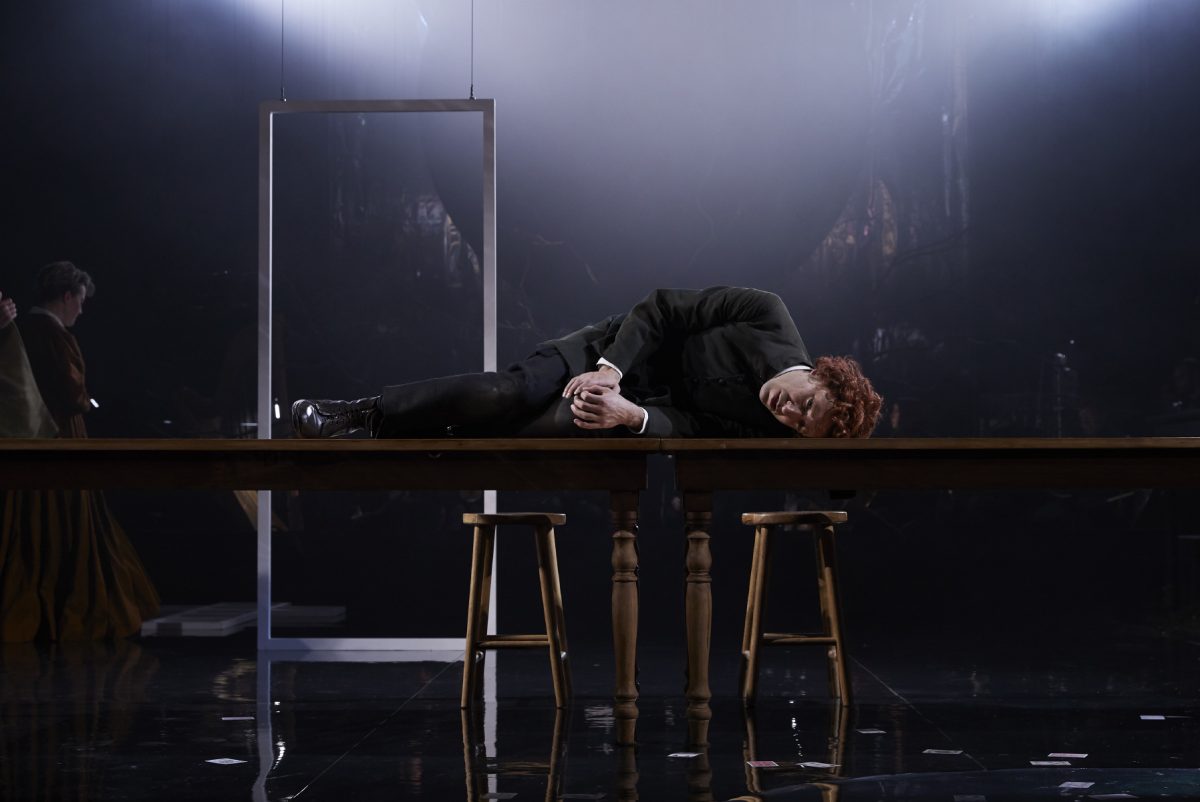
ELLIOTT GYGER’S
OPERA JOURNEY
A composer’s lifelong path to
Oscar and Lucinda
By Annarosa Berman
To music lovers it might seem that composer Elliott Gyger arrived on the opera scene fully formed in 2015, when Sydney Chamber Opera premiered his Fly Away Peter. But speaking to Gyger on the first day of rehearsals for his second opera, Oscar and Lucinda, one realises that this composer’s journey began on the day he was born
The son of opera critic David Gyger and music academic Alison Gyger, listening to and attending opera was like eating breakfast to Elliott. He was four and a half when he wrote his first piece of music, a song of which his parents wrote down the words, and not much older when he attended his first opera performance, an open dress rehearsal of the first two acts of Aida, at the Sydney Opera House. Gyger remembers being entranced by the spectacle, but frightened by the noise. “During the triumphal scene I hid under a chair!” he laughs.
At six he attended his first full-length opera, The Magic Flute. “I was delighted,” he remembers. Nothing about it seemed strange; moreover, when studying languages later at school, he found that Italian, French and German came very naturally to him. “I’d heard them sung around the house for years.”
Gyger wrote his first formal piece of music at nine. He blames his flute teacher, Belinda Webster, now director of the Tall Poppies classical music recording label, for the event. “In class one week she told us that for homework we had to write a solo piece for flute. Next week we came back and I was the only one who’d actually done it. So I can credit Belinda Webster with the start of my composition career.”
His first hands-on opera experience came when he was in the children’s chorus for three Australian Opera productions: Boris Godunov, La Bohème and Tosca. He remembers it as an introduction to the making of opera: the rehearsal process, the difference between a piano score and a full score, the vocal ranges, the mechanics of getting around a stage.
He also remembers the Act I church scene in Tosca, and the coronation scene in Boris Godunov, as pivotal in triggering his decision to become a composer. “Both scenes have amazing orchestral representations of bells, with the harmony powerfully invoking both sonority and emotion. It was almost overwhelming to be on stage with that music playing around you. I wondered if I could write music that would make people feel the same way.”
The path to true love is seldom without obstacles though, and in his late teens Gyger experienced “a bit of a reaction” against the high melodrama of the operatic canon. He loved the Australian Opera’s Britten and Janáček productions though. Two key pieces from this time were Britten’s The Turn of the Screw, a kind of operatic theme and variations, and Berg’s Wozzeck, built from tiny pieces constructed with precision and power. These works taught Gyger that an orderly musical structure enables a composer to take risks with extremes of emotion and contrast, a lesson that would stand him in good stead when years later he wrote his own operas.
While still in his teens he did begin to write an opera, only to realise, half a scene in, that he didn’t know what he was doing. “I was trying to run before I could walk.” He would not try again for many years. Having graduated from Sydney University, where he studied composition with Ross Edwards and Peter Sculthorpe, he headed for Harvard, where he completed his PhD in Composition under the guidance of Bernard Rands, who’d taught Anne Boyd, and Argentinian composer Mario Davidovsky.
He spent four more years teaching at Harvard before returning to Australia. “The US is so vast, it’s very easy for composers to forget that there’s a world outside it,” he says. “The advantage of being smaller and further away from the big cultural magnets of Europe, is that we can be more open to cultural influences from elsewhere. Asia for example.”
Having focused on choral and instrumental writing in his early career, a turning point for Gyger was From the Hungry Waiting Country, premiered by Halcyon in 2006, in which he combined vocal and instrumental music for the first time. When SCO was established in 2010, founding member Louis Garrick approached him with a view to doing a project with the company. Fly Away Peter grew from that.
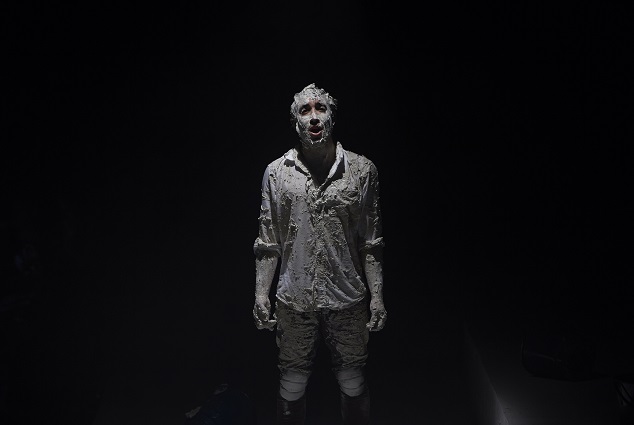
Chatting for this article on the first day of rehearsals for Oscar and Lucinda, Gyger says it does not surprise him that Brett Dean had found another Peter Carey novel, Bliss, suitable for his 2011 opera debut. “Both Oscar and Lucinda and Bliss turn the realistic into the surreal and the transcendent. That’s opera. You walk into a room and people are singing – realism is not an option.” Opera also excels at depicting characters with rich internal states of mind. “Oscar and Lucinda has dramatic confrontations, arguments, a love story, but those things are only interesting when the composer puts us inside the minds of the protagonists.”
In Fly Away Peter the principal image was that of birds in flight, and consequently the music was horizontal. “It was all about long lines and arches through space.” Oscar and Lucinda the novel, by contrast, consists of many tiny chapters. “Peter Carey’s aim seems to have been to tell a story in shards.” Thus, Gyger has created a vertical musical landscape, with the kaleidoscope as its guiding image. “The two central ideas of the novel are glass and chance. The kaleidoscope captures both: if you turn it, the pieces of glass inside fall randomly into an arrangement. You think you’re seeing a pattern, but in fact it’s just randomness multiplied to create the illusion of a pattern. If you turn the kaleidoscope again, the same elements re-assemble themselves into a completely new pattern.” Similarly, the music in Oscar and Lucinda is like the constant resetting of a kaleidoscope. “It’s as if the listener is being told to have a look at the view through the kaleidoscope, then told that the kaleidoscope has been turned and the image has fallen in a new place.”
Although by the time he wrote Fly Away Peter he was very confident of his musical skills, Gyger learned many lessons from his first opera. The most important one was to trust his collaborators. “I wasn’t sure that my music and Pierce Wilcox’s words had created believable characters. But the singers took our material and turned it into characters in front of our very eyes.” He also learned to have faith in the production team. “Whatever I imagined Fly Away Peter to look like on stage, it was far less interesting than what my collaborators had created.” He remembers spending an afternoon with the lighting designer. “Magic was happening right there on stage.”
The two central ideas of the novel [Oscar and Lucinda] are glass and chance. The kaleidoscope captures both: if you turn it, the pieces of glass inside fall randomly into an arrangement.
These days he doesn’t often go to mainstream opera. “But I probably should, because every time I do go I learn something. Marriage of Figaro, for example, is in some ways an unsurpassable peak of the most amazing perceptiveness in terms of human character. And Rosenkavalier is in many ways an early 20th century version of that. I learn something every time I see these works.” And not only these works. At a recent performance of Pinchgut’s production of Ulysses, a piece he’d never heard, he was struck by how, within decades of opera being invented, Monteverdi was already doing “absolutely extraordinary things with characters on stage.”
Gyger has ideas for several more operas. Turning them into reality would depend on opportunities. “One thing I value at SCO is the creative freedom they’ve given me. They’ve never been alarmed by anything I’ve proposed. I’ll always be looking for that kind of freedom and mutual respect.”
Keep in touch
General Inquiries
- contact@sydneychamberopera.com
-
SCO, Carriageworks
PO Box 3035 Redfern, NSW 2016
Postal Address -
SCO, Carriageworks
245 Wilson St Eveleigh, NSW 2015
Resident Address - (02) 8571 9106
Support Us
Connect with us
We acknowledge the Gadigal people of the Eora Nation as the traditional custodians of the land on which we work and perform. We honour their elders both past and present, and extend that respect to all Aboriginal and Torres Strait Islander peoples.
- Tags oscarandlucinda
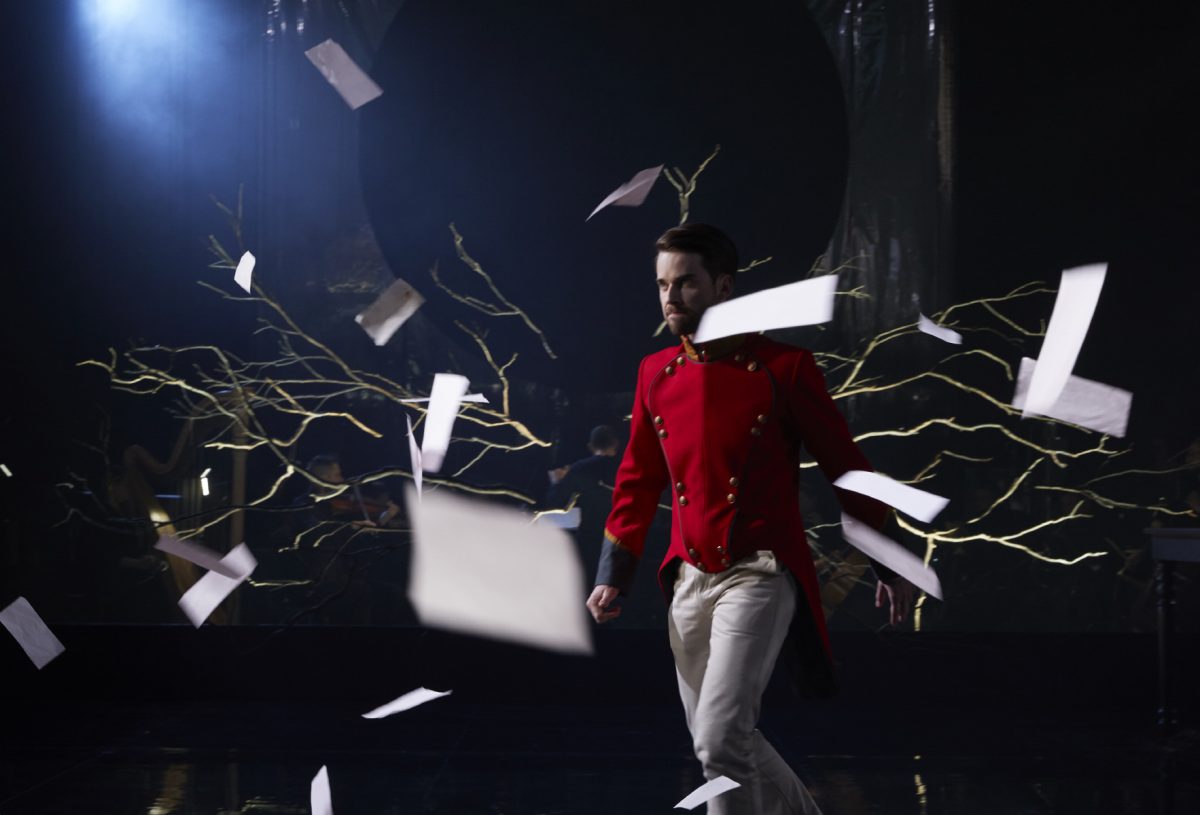
OSCAR AND LUCINDA
Opera in two acts
Music by Elliott Gyger
Libretto by Pierce Wilcox
after the Novel by Peter Carey
World Premiere
A co-production and co-commission of Sydney Chamber Opera,
Opera Queensland and Victorian Opera
Peter Carey’s beloved novel is one of our nation’s artistic triumphs, winner of the Booker and Miles Franklin Awards. Elliott Gyger is the composer who gave World War I phantasmagoric life in Fly Away Peter. In May 2019, he reunites with librettist Pierce Wilcox to transform Carey’s kaleidoscopic tale into a new landmark of Australian opera, directed by internationally acclaimed Patrick Nolan.
She is an orphaned proto-feminist industrialist; he believes he is touched by God. They have nothing in common- except their maddening addiction to gambling. She calls it chance; he calls it providence. Oscar and Lucinda find each other in colonial-era Sydney, and nothing will keep them apart. Until they are torn by a wild dream: to build a cathedral of pure glass, and walk it into the Australian outback.
Oscar and Lucinda is a bonfire of the passions within every human soul. It is impossible, romantic, and visionary.
Like a church made of glass.
Conductor
Jack Symonds
Director
Patrick Nolan
Set & Costume Design
Anna Tregloan
Lighting Design
Damien Cooper
Assistant Director
Constantine Costi
Singers
Jessica Aszodi
Brenton Spiteri
Jeremy Kleeman
Simon Lobelson
Mitchell Riley
Jane Sheldon
Instruments
Peter Clark
Veronique Serret
James Wannan
Henry Justo
Judith Hamman
Paul Zabrowarny
Muhamed Mehmedbasic
Ben Opie
Jasper Ly
Jason Noble
Georgina Oakes
Gergely Malyusz
Neil O’Donnell
Ben Kopp
Emily Granger
Claire Edwardes
SCO thanks the Oscar and Lucinda Production Circle for their support of this ambitious work:
Production Partners ($15,000+)
Martin and Susie Dickson, Kim Williams AM
Principal Artist Partners ($10,000- $14,999)
Anonymous (1), Meredith Brooks, Neil Burns,
Penelope Seidler AO, Christine Williams &
The Macquarie Foundation
Artist Partners ($5,000- $9,999)
John Barrer, John Kaldor AO, Jane Mathews AO,
The Russel Mills Foundation, Prof Di Yerbery AO
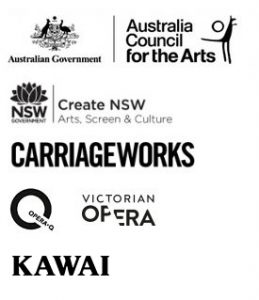
Gallery
VENUE
Carriageworks
Bay 20, 245 Wilson St, Eveleigh
duration
130 minutes
Including one 20 minute interval
Press Reviews
Discover More

Oscar & Lucinda – Elliott Gyger’s Opera Journey
A composer’s lifelong path to Oscar and Lucinda
By Annarosa Berman

Drowning in a Glass Church
The challenge of staging Oscar and Lucinda
By Annarosa Berman
Keep in touch
General Inquiries
- contact@sydneychamberopera.com
-
SCO, Carriageworks
PO Box 3035 Redfern, NSW 2016
Postal Address -
SCO, Carriageworks
245 Wilson St Eveleigh, NSW 2015
Resident Address - (02) 8571 9106
Support Us
Connect with us
We acknowledge the Gadigal people of the Eora Nation as the traditional custodians of the land on which we work and perform. We honour their elders both past and present, and extend that respect to all Aboriginal and Torres Strait Islander peoples.
Saariaho’s Musical Path to Simone
- Post author By administrator
- Post date January 22, 2019
- No Comments on Saariaho’s Musical Path to Simone
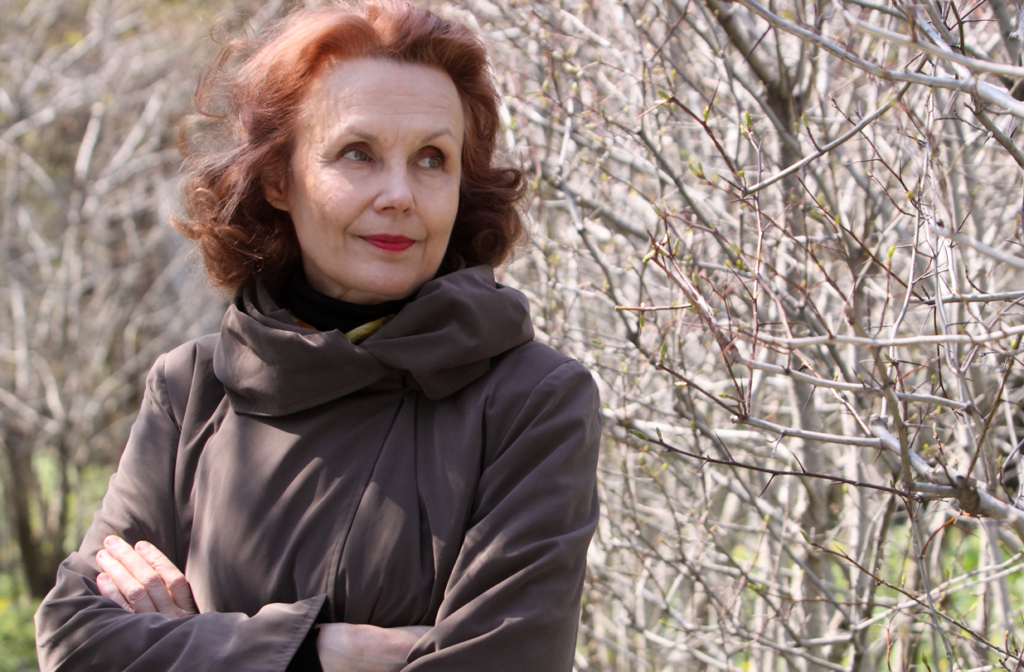
SAARIAHO’S MUSICAL PATH TO SIMONE
SCO’s Artistic Director discusses the work of Saariaho
By Jack Symonds
Why did I so strongly want to bring Kaija Saariaho’s La Passion de Simone to Sydney Chamber Opera? Simply because the fusion of Saariaho’s unique musical style with the ideas and persona of Simone Weil seemed a perfect match, and one ripe for investigation on the stage by a probing creative team.
Saariaho’s music has been a love of mine since I was a teenager- I must have played albums of her string concertos and orchestral works a hundred times. The universe of sound she invariably unveils in the first five seconds of a piece is musically unique and expressively sui generis: I can’t think of any composer who makes music the way she does.
The glistening webs of tone that open each work seem to stretch from the bottom to the top of one’s aural perception, ushering in an ocean of music that teems with a seemingly impossible abundance of sonic life. Much has been written comparing Saariaho’s music to natural phenomena; waves, lava, the slow unfolding of flowers. The essence of her art is to bend the instrumental and vocal colours available to create a sense of sound reborn from the grit of white noise, embracing the purest fundamentals of music making in striking new ways.
A little bit of history for those wanting to know where Simone came from: in the 1990s Saariaho really began to integrate her early explorations of electronics in Paris with her instrumental writing. It’s like the whole orchestra heaves with an electronic force trying to break out of what it means to play ‘correctly’. She refined this into works of considerable drama, density and savage beauty- listen especially to the orchestral diptych Du cristal …à la fumée. That piece does what it promises: gradually turns a very hard, crystal-like musical object into the aural equivalent of smoke by a kind of musical alchemy where everything melts and becomes effervescent. This process is here perfected, and never left her musical arsenal; La Passion de Simone seems to be built on this principle of writing. What I love about this earlier style is that even though it’s sometimes almost impossibly dense, her clarity of composition and orchestration means that it’s like one hears almost limitless depths of ideas and textures in some kind of vast, uncharted world.
Gradually, the density begins to clear. A piece like Graal Théâtre is every bit as complex in its thought patterns as Du cristal, but the lines are cleaner and the whole sound world more iridescent; the colours are chosen with delicacy rather than the immense textural strength of before. This is a violin concerto, and the violin’s long, singing lines perhaps prepared the way for her long-awaited détente with the solo voice.
Kaija Saariaho Graal Theatre Violin concerto
It was the original singer of Simone, soprano Dawn Upshaw, who initially seems to have inspired Saariaho to begin to write more – and differently – for the voice. The soprano and electronics piece Lonh, and soprano, female choir and orchestra work Château de l’âme seem to be gateways to the operas, and to Saariaho’s more recent music in general. The singing lines she was making room for are now, very naturally, vocal melodies. She also seemed to happen upon a distinctive vocal style almost immediately. Sung melodies act like extraordinary, lyrical ornaments on the orchestral or instrumental texture creating long, hypnotic lines of arresting beauty. They seem sensually arching, always with clear high points and expressive directness. Her background in electronics and composition using the natural overtone series (‘Spectralism’) means that the vertical harmonies which produce these horizontal lines are extremely resonant and have a real connection to each other – even though they are complex. The way Saariaho spaces notes on top of each other is carefully done so that we can hear every single pitch precisely, making the music feel inevitable and somehow ‘right’.
Her big hit was the opera L’amour de loin from 2000– a dreamy, medieval troubadour work which is perhaps the absolute epitome of her style, recently staged by Robert Lepage at the Metropolitan Opera. The old troubadour-inspired songs and chants which form the backdrop to this opera really seem to have gotten under her skin and even emerge, transformed in subsequent pieces. The next opera was perhaps a surprise in its directness and brutality: Adriana Mater is about a woman raped in war, becoming pregnant, and the story of her bringing up a son who becomes a violent, complex man. All the implicit, lava-violence of the early ‘90s music comes bursting out in that piece which still manages to contain a final scene painting the most moving portrait of maternal love and forgiveness I think I’ve ever heard in opera. Simone was next and, I think, successfully marries the brutality of Adriana with the voluptuousness and languor of L’amour de loin.
L'Amour de Loin: "Si tu t'appelles Amour", staged by Robert Lepage at the Metropolitan Opera
All the best qualities of Saariaho’s music are on display in this extraordinary piece from 2006. The enveloping mystery of the opening immediately conjures the paradoxical, strange figure of Simone Weil with a pool of sound that seems as if it has existed forever, waiting for this story to be told.
The solo soprano takes on Simone as an idea: she sings to her, about her, through her, around her and speaks as her, allowing Saariaho to use instruments, voices and text to paint a more complex and fully-realised Simone than any single performer could ever portray. The additional use of choral voices adds immeasurably – they are embedded in the tapestry of the orchestra, and I see them giving words and definite meaning to the instruments to articulate this imagined, musical Simone.
The vocal melodies and words are then spun in time over a constantly shifting instrumental backdrop of resonance. It’s this sense that everything is always melting, transforming and alive that is essential to capture in every aspect of realising her work.
..."The universe of sound she invariably unveils in the first five seconds of a piece is musically unique and expressively sui generis: I can’t think of any composer who makes music the way she does."
There is also an ever-present feeling of timelessness, and a deliberate confusion of the unfolding of musical time versus clock time. In a great Saariaho performance you should feel like you have no idea how long you’ve been there – five minutes could stretch into eternity, or the whole thing could feel like an upbeat to a single, new second. I will never forget the feeling of seeing the world premiere of Lumière et pesanteur in 2009. It’s actually a short orchestral piece, a transcription of the 8th ‘Station’ of Simone. I hadn’t heard Simone at all then, but the sense that this six or so minutes was complete, perfected, suspended time in an exquisite unfolding world- like the most delicate plant opening in timelapse- has never left me. Since then, I knew I had to find a way to bring a major piece of Saariaho’s to Sydney, and Simone is, unbelievably, the first of her larger works to ever be performed in Australia.
Director Peter Sellars has said of Saariaho’s work that “in the 21st century…we have a responsibility to do more than sit around and tell sad stories. Here we see there will be a future. And that future has been guaranteed all over the world by women, women who in impossible situations nourish and cultivate human dignity.” Simone Weil: figure of impossible, paradoxical grace, Kaija Saariaho: composer of some of today’s greatest and most distinctive music, and the Australian dream team of director Imara Savage and designer Elizabeth Gadsby are just the people to show us this future.
Keep in touch
General Inquiries
- contact@sydneychamberopera.com
-
SCO, Carriageworks
PO Box 3035 Redfern, NSW 2016
Postal Address -
SCO, Carriageworks
245 Wilson St Eveleigh, NSW 2015
Resident Address - (02) 8571 9106
Support Us
Connect with us
We acknowledge the Gadigal people of the Eora Nation as the traditional custodians of the land on which we work and perform. We honour their elders both past and present, and extend that respect to all Aboriginal and Torres Strait Islander peoples.
- Tags passiondesimone
A Passion for Transcendence
- Post author By administrator
- Post date January 22, 2019
- No Comments on A Passion for Transcendence
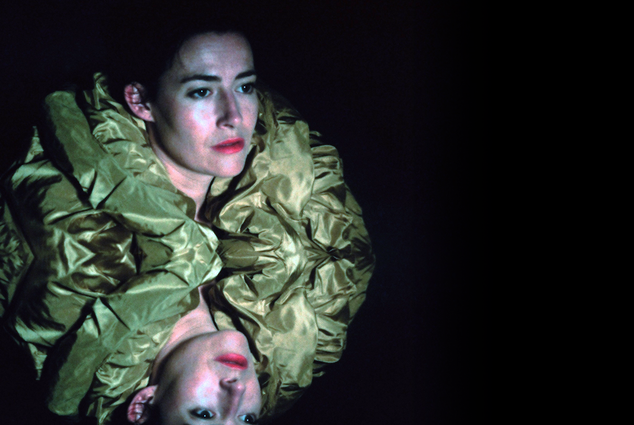
A PASSION FOR TRANSCENDENCE
Creatives find their concept for La Passion de Simone
by Annarosa Berman
The idea for the form of La Passion de Simone, a work for solo soprano, chorus and ensemble based on the life of the philosopher Simone Weil, came from the passion play tradition according to composer Kaija Saariaho. Yet when the director for Sydney Chamber Opera’s new production for Sydney Festival, Imara Savage, and designer, Elizabeth Gadsby, began to explore Saariaho’s score and Amin Maalouf’s libretto, they were initially confused.
Says Savage: “The different sections are labelled as Stations, so as a theatre maker you think, okay, this is a passion play – there are discreet episodes that lead to the main character’s death. Except that the music does not necessarily reflect such episodic stations- it is much more subtly structured and complex.” Maalouf’s libretto did not fit the passion play mould in any obvious way either – as Savage puts it: “How do you stage somebody’s thoughts changing?”
Savage and Gadsby, who in the early, conceptual stages of a production think of themselves as co-directing, approached SCO artistic director and conductor of the production Jack Symonds for help. “Can you tell us what the music is doing, and why? ” they asked. Symonds responded with an essay explaining, among other things, how Saariaho’s score can be thought of as operating like sonic waves that sometimes build to what could be perceived as a climax, yet are never resolved.
“Elizabeth and I both connected with Weil’s view that you gain knowledge through endurance and suffering,” Savage says. “If you walk into suffering rather than pulling away from it, you transcend it to a place of spirituality, where death is not the end. When we started thinking about Weil’s life in these terms, it became easier, because the music strongly reflects it.”
In keeping with this insight, Gadsby began to grasp the drama of the music when she realised that it was constantly moving from one thing to the next, like particles in space. “It’s not dramatic in the sense that it builds up and then settles – it never settles. It goes towards something and then shifts and moves somewhere else. Therein lies the drama.”

What sustains the narrative is Weil being in a constant state of endurance, with the assurance that if she endures long enough, there will be some kind of knowledge gained. Savage says: “La Passion de Simone is a meditation on suffering. It asks you to contemplate what it means to step into suffering, like Weil did. She gave away all her worldly possessions and rationed her food in accordance with what people could eat in wartime France, for example. She suffered so that she could empathise with others who suffered.”
Gadsby likens this “constant state of endurance” to the experience of picking up a stone and examining it from multiple angles. “You look at it from every possible perspective and then you go, well what does this object taste like? And what does it feel like to try and be a stone? That’s what Simone did: she emulated other people’s experiences in order to have compassion for them. She went to war, went to work in a factory, starved herself.”
Once director and designer grasped how the music sustained the drama, the next question was, how does one represent, on stage, a constant state of flux?
Gadsby says: “The idea of watching something dissolve, then reform in front of your eyes, came up. Imara said, how do you stage that? So we started thinking of gestures that would create a sense of watching matter decompose and reform, and we settled on white rice as a material that could fall in a constant stream, or be in a constant state of flux.”
As [Amara] Savage puts it: “How do you stage somebody’s thoughts changing?”
But singing an opera while a pile of rice is falling on you would be challenging, plus the women didn’t think Symonds would be thrilled with the sound of rice constantly falling on stage during the performance. There was also the structure of the libretto to contend with: the soprano, sung by Jane Sheldon, embodies Weil, while simultaneously observing her as narrator. Savage and Gadsby found a solution that was both practical and artistically satisfying when they asked video artist Mike Daley to create a video installation of Sheldon standing underneath four tonnes of rice piling up around her. Thus, the Sheldon in the video talks, and observes Weil, while Sheldon on stage sings, and embodies Weil.
If the image of Weil slowly being subsumed by rice is a relatively static one, that is the intention. Savage says: “As designer/director, your task is to keep the audience stimulated by creating and changing images. But in Passion, the music is going around the cosmos, and the libretto, besides being full of philosophical contradictions, goes from God to politics to lived experiences to Weil as a child to Weil on her death bed. The libretto and the score need something to anchor it, or you’d be doing the same thing three times over.”
Gadsby adds: “The music gives the emotional content and the libretto acts as intellectual foil to that. What we are trying to do is to create a space where the audience can sit with all the information and emotional content that they’re given. The central image, although it is constantly moving towards something else, stays the same.”
“You look at it from every possible perspective and then you go, well what does this object taste like? And what does it feel like to try and be a stone? That’s what Simone did: she emulated other people’s experiences in order to have compassion for them. She went to war, went to work in a factory, starved herself.”
Direction and design ideas grew organically from the two women discussing the work. “That’s generally how Elizabeth works,” says Savage, to which Gadsby adds: “The best design happens when the designer and director’s brains merge, so you don’t know whose idea was what. Imara bombards me with ideas: sometimes I’d open my inbox and find twenty emails from her, and a hundred images and written thoughts. She pours all this information on me, and I then piece together the most important ideas and we discuss them.”
Many people would struggle to make head or tail of the “indiscriminate” research that she shares with Gadsby in the conceptual phase, Savage says, but Gadsby always manages to create a synthesis. “I said, ‘Rice? No, maybe not.’ And Elizabeth said, ‘Rice? Yes!’” They discussed the symbolism of rice: how it stands for consumption and nurturing, but in some Buddhist traditions where you’d eat one small bowl of rice a day, also for asceticism. And when mandalas are built from rice, for meditative qualities. “It resonated with so many ideas in the work,” Gadsby says.
In the end, La Passion de Simone’s creative team found their answers by focusing not on its links to the passion play, but on Simone Weil’s fractured and contradictory identity. “She’s an activist but also a philosopher, she was Jewish but became Christian and was interested in Eastern religions,” Savage says. “She’s a multi-faceted woman who cannot be pinpointed into a particular thing. In fact, it would have been a disservice to have tried to describe her in fifteen stations.”
Keep in touch
General Inquiries
- contact@sydneychamberopera.com
-
SCO, Carriageworks
PO Box 3035 Redfern, NSW 2016
Postal Address -
SCO, Carriageworks
245 Wilson St Eveleigh, NSW 2015
Resident Address - (02) 8571 9106
Support Us
Connect with us
We acknowledge the Gadigal people of the Eora Nation as the traditional custodians of the land on which we work and perform. We honour their elders both past and present, and extend that respect to all Aboriginal and Torres Strait Islander peoples.
- Tags passiondesimone